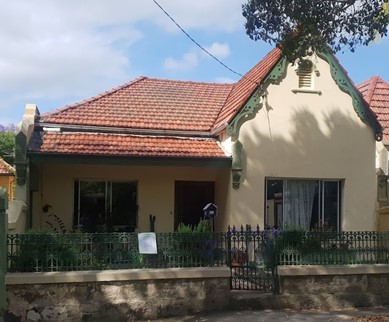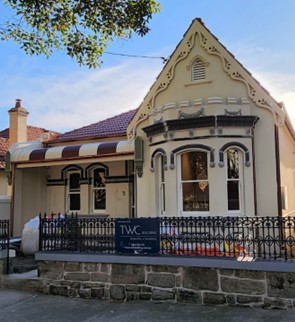By Ian Stephenson, Convenor, Bulletin 7/2023 September
There has been much attention in the media about ways of solving the housing crisis. The primary focus has been on loosening planning controls in order to allow for higher density as a way of increasing supply and hastening delivery. This is not as easy as it sounds, for example how will the mooted 30% height bonus on developments valued at more than $75 million affect controls on overshadowing? Take a drive south down Elizabeth Street in the city on a winters afternoon. At Hyde Park you will notice that the buildings on your right step up to the rear of their sites in order to allow sunlight in the park. This is good planning. Are these qualitive controls to be abandoned?
Opponents of the deregulation of planning are being stigmatised as Nimbys. Nimbys are not, as was recently suggested to me, relics of the 1973 Nimbin Aquarius Festival, a counter cultural arts and music shindig organised by the Australian Union of Students, but people opposed to increased density in their suburb. Nimby is an acronym for ‘Not In My Backyard’.
The challenge of creating more housing however has two arms to it, it’s multi-faceted. It is about creating more dwellings as well as good places for people to live in. We are not a poor country, nor an uneducated and unsophisticated one. Cities are artefacts where the natural inheritance of topography and climate, as well as the legacy of history, can be shaped by human intelligence to create great places which enrich people’s lives. The converse of course is equally true where uninspired planning can create dreary places which are dispiriting.
The counterpoint of the Nimbys are the Yimbys. Yimby is an acronym for ‘Yes In My Backyard’. The danger here is that removing qualitative controls will produce places which are not good to live in. Indeed it will create a more inequitable society because the wealthy can afford to live in the nicest places whilst abandoning qualitative controls leaves the poor even more disadvantaged.

Jude Paul, the Society’s secretary, has coined a new acronym, Qimby – ‘Quality In My Backyard’. It has merit because it does not oppose increased density but says it must be accompanied by good planning which respects identity, community and liveability.
The City of Sydney’s design review of the NSW government’s plan for the Blackwattle Bay State significant precinct demonstrates the value of sophisticated, as opposed to simplistic planning. It showed the same yield could be achieved with fewer and lower towers, there could be a new park with plenty of sunshine instead of the gloomy one proposed under the Anzac Bridge flyover, a wider foreshore promenade, less overshadowing to neighbouring properties, a safe and comfortable wind environment and less exposure to air and noise pollution.
Glebe has been a leader in good planning where heritage conservation, development and social equity have all worked in concert. The Federal government’s purchase of the church estates had three goals: to avoid disruption to community networks, retain the opportunity for people on low incomes to live close to the city and rehabilitate an historic suburb. The NSW Housing Commission added beautifully designed low-rise infill which respected the character of the suburb but allowed more people to live here.
Opportunities remain in Glebe to increase density through additional well designed infill development. The key to this is intelligent planning. It is a mistake to think that good design must be expensive. This is demonstrated by comparing the NSW Land and Housing Corporation’s total knock down and rebuild proposal for 82 Wentworth Park Road with the Society’s refurbish and extend scheme.
The LAHC scheme will produce 53 bedrooms at a cost of $21,723,996 whilst our scheme provides for a total of 52 bedrooms at a cost of $14,050,700. As well as leaving over $7 million to be spent on more public housing there are other benefits including more diverse housing types (it retains 3-bedroom houses for families, LAHC’s scheme does not), it does not reduce the supply of public housing for several years as the LAHC demolition approach does, it produces less greenhouse emissions than LAHC’s scheme and is better adapted to its setting, the Lyndhurst Heritage Conservation Area.
In the course of the year the Society made many planning submissions. Some were successful and others not. Having alluded to backyards (Nimbys) I am, perhaps rather perversely, going to start this review with some front yards.
3 Avenue Road
The Society provided a report to council’s heritage advisor which analysed the extant elements of the façade at 3 Avenue Road and included a photograph of the house before the 1970s renovation. The owners are to be commended for agreeing to vary their application to reinstate the bay window, fenestration and decoration. It is a great result, not only for this property but the street which is one of Sydney’s finest Edwardian streetscapes. It is a pleasing example of the Society, the Council and a property owner working in concert. To paraphrase the words of the Beatles’ song Come together right now, over Glebe!
St James’ Hall
The Society supported the provision of affordable housing at the historic St James’ Hall but recommended that as far as possible the porch remain intact. The Local Planning Panel agreed.
St Scholastica’s College
We had less success with the front yard of St Scholastica’s College.

This is a distinguished heritage place and includes four listed buildings – the chapel, Toxteth House, the Administration Building and the fine Arts and Crafts house Wychwood, all set in beautifully landscaped grounds. The proposal was for a three-storey building (coloured blue in Fig 5 above) which exceeded the statutory 9 metre height control by 47%. The Heritage Inventory Report for the College states that ‘any additions and alterations should be confined to the rear in areas of less significance and should not be visibly prominent’. The draft conservation and management plan by Alan Croker, one of Australia’s leading conservation planners and the author of the CMP for the World Heritage listed Sydney Opera House, grades the Avenue Road part of the campus as being of Exceptional and High significance and provides a framework to protect it by identifying other parts of the campus which have development potential or where additional floors could be added. The Society argued that the building should comply with the 9-metre height control and that a taller building should not be erected in the visual curtilage of the Avenue Road frontage. Regrettably neither the planners at the council or the local planning panel agreed.
We made many other submissions all of which have been reported in previous Bulletins and can be read on our website. We were successful in opposing the destruction of the interiors of a listed house in Glebe Point Road. With other submissions Council often shared our views leading to good amendments either in discussion with the applicants or at the determination phase. If asked we responded proactively to requests for advice, notably at 39 Lodge Street, Forest Lodge where the owner sought advice on how to read the physical evidence of the form of a verandah demolished in the 1960s which they wished to recreate. The Society supported the development application and the works were carried out to a high standard.
We regret the approval to demolish a Contributory building in Ferry Road and await in hope of a good outcome for applications to demolish Contributory buildings in St Johns Road and Forest Street to which we have objected.
The Society welcomes Minister Jackson’s decision to halt the sale of the church estate houses and looks forward to more rational and effective approaches to their maintenance. The 150-year tradition of these estates housing low-income tenants must be respected. It is the urban and social fabric: rich middling and poor living in nineteenth century houses which makes Glebe a great place. We are only three kilometres from the city but have the diversity, sociability, and even annoyances, of a country town. As Edna Everidge sang in the 1958 album “Wildlife in Suburbia” Vaucluse and Toorak can go to the pack, its Glebe, Glebe, Glebe!
Jack Mundey said in 2009 at the 40th anniversary of the Society we have to redouble our efforts to tell whoever is in power in Macquarie Street, we’ve got to tell them that they can’t destroy all of Sydney and therefore we have to fight for the heritage we own, the heritage we’ve built and the heritage we want to inherit. His words are as true as ever.
I would like to congratulate our compatriot organisation Hands off Glebe in saving the Cox Richardson designed Franklyn Street public housing estate which the LAHC had planned to demolish for towers up to 14 storeys high. It is a great victory. We are working together with Hands off Glebe in the campaign to refurbish and extend, rather than demolish, 82 Wentworth Park Road.
The Yimbys try and stigmatise people who believe in good planning as being selfish. Glebe with its terrace houses on small parcels of land is a high-density suburb. The NSW Housing Commission using public servant architects added over 1,000 bedrooms through well designed infill in the 1980s. In addition the Harold Park development accommodates 2,500 people and the affordable housing and Mezzo developments and Pavilions on the Bay 686 dwellings. Affordable housing has been approved in Woolley and Franklyn Streets and 70 apartments are under construction at the Prince’s Quarter in Cowper Street. The Bidura development, which seems longer running than Agatha Christie’s Mousetrap but may reach its denouement when it comes before the LPP on August 30 , will include something in the order of 60 new dwellings. The NSW Land and Housing Corporation must stop demolishing well-built public housing and learn to refurbish and extend. They also need to reskill themselves by employing in house architects and maintenance people. It seems to be only Yimbys and developers who believe in the now discredited philosophy of deregulation.
Don’t be a Nimby, don’t be a Yimby but use your brain, be a Qimby and encourage intelligent planning.














One comment. Please add yours.
Thank you for this article. It was informative and well written. I was not aware of the good work this committee is doing.